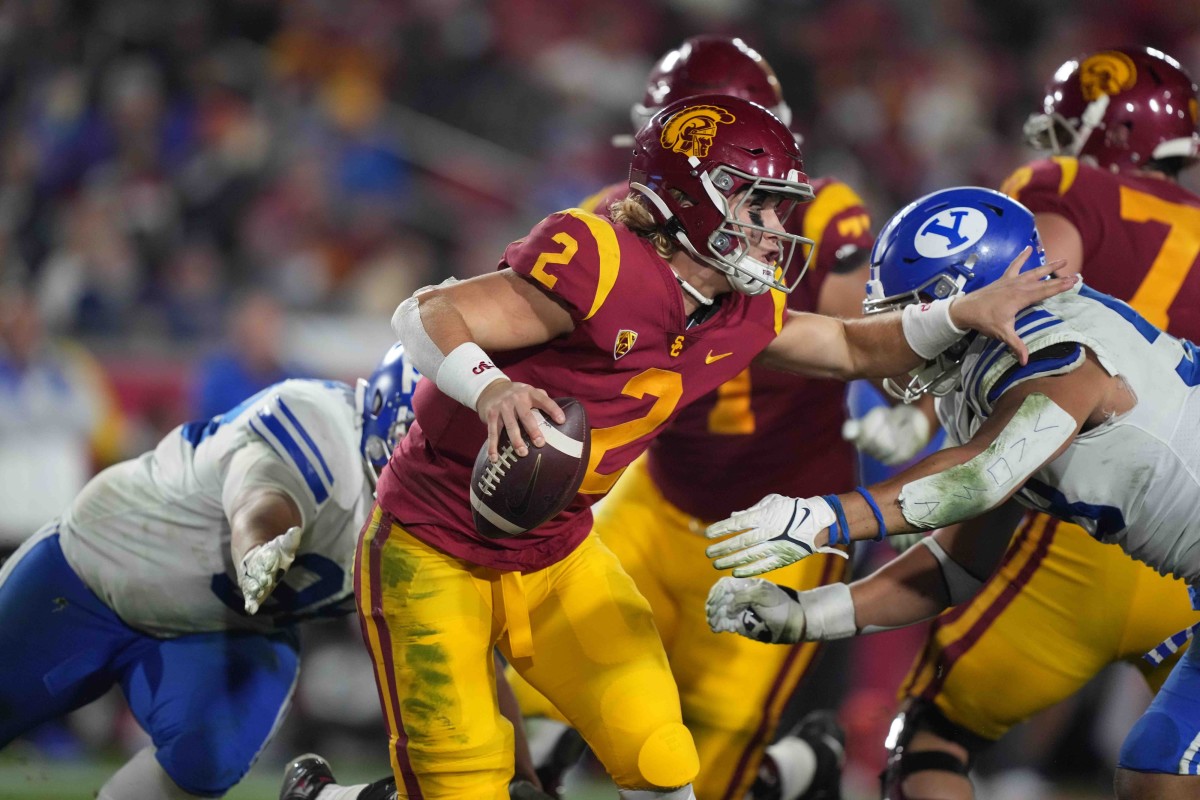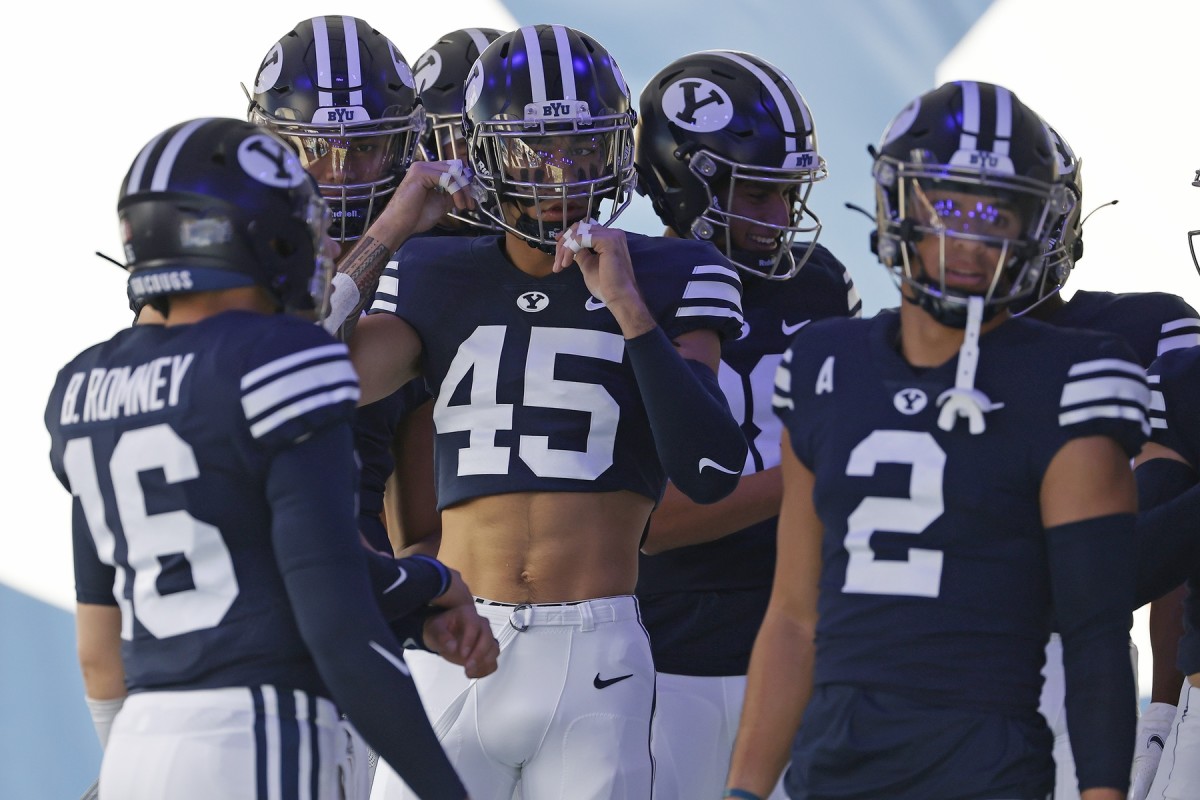5 Key Adjustments BYU Football Needs to Make for the 2022 Season
With the release of the final AP poll, we can officially tie a bow around the 2021 college football season. BYU’s 19th-ranked finish caps off what was an impressive season overall, particularly with how the school dominated the Pac-12 en route to a 6-1 record against P5 schools and a 10-3 finish. This was the first time BYU finished ranked in back to back seasons in the entire Independence area.
While this year’s team definitely had some notable accomplishments, the ugly bowl loss to UAB and occasional struggles in other games show that this team still has plenty of room for improvement.
For as much preseason hype that the 2021 schedule got, 2022 might actually be a tougher challenge, with five opponents that finished ranked in the top 25. If BYU wants another double-digit win season, some key adjustments need to be made.
1. Bring a Pass Rush
Remember how BYU’s lines manhandled Utah on both sides of the ball? That story didn’t really pan out over the course of the season. With just 20 sacks on the season (an average of 1.54 per game), BYU ranked 109th out of all FBS schools in team sacks. The Cougars also ranked 109th in team tackles for loss, with an average of 4.5 per game.
Putting opponents behind schedule is crucial for getting the defense off the field (as we’ll see later). Unfortunately, BYU’s defensive line quite often seemed like they were simply being asked to take up space rather than generate any kind of meaningful pressure at the line of scrimmage.
This doesn’t mean that the defense needs to blitz on every down. But giving playmakers like Tyler Batty more opportunities to get into the backfield with more four or five-man fronts could go a long way in helping in other defensive areas.
2. Locking Down On Third and Fourth Down
For everyone who felt like the defense was on the field for way too long during some stretches of the season, the numbers are on your side. The Cougar defense ranked 106th in third down conversion percentage, with opponents managing a first down on 43 percent of attempts. Shockingly (or maybe not so shockingly), fourth down defense was even more abysmal. The Cougars ranked 109th in this stat, with opponents converting on 17 of 26 attempts — a .654 averag

As I’ve written previously, a big part of this problem comes from the 2021 defense’s struggles against the run, giving up an average of 4.34 yards per carry. With that kind of average, you could essentially hand the ball off on every single play and march all the way down the field, eating up tons of clock as you go.
Obviously, how the defense performs on first and second down play a big role in what happens on third and fourth. But in 2022, the defense as a whole needs to look a lot more like it did in the Utah game.
3. Return Game? What Return Game?
The days of “You punt, you Dye” seem to be ancient history for BYU at this point.
BYU ranked 104th in kickoff returns, with an average return of 17.53 yards per return and zero touchdowns. The numbers for punt returns look better overall — BYU returned 25 punts for 228 total yards (a 9.12 yard average), ranking 49th in the country. The Cougs also got a punt return touchdown off Keanu Hill’s block against FCS foe Idaho State.
Still, there’s no denying that the return game has felt like little more than an afterthought for BYU the last few seasons. A dynamic returner can completely alter a game — that’s how Britain Covey made his mark for the team up north. Giving some of the speedier guys on the roster a chance to actually return punts and kicks could have a bigger impact than expected.
4. Getting Back Into the Kicking Groove
In 2020, Jake Oldroyd was a perfect 13 for 13 on field goal attempts, with a long of 54. He was a great asset to have who was a deserving finalist for the Lou Groza Award.
The 2021 season was a bit less steady. Oldroyd went 9 for 13 on his field goal attempts, and missed several games due to injury. His backup, Justen Smith, went 2 for 3. While the Cougars don’t rely on the kicking game as often as other teams, a dependable kicker can make all the difference in a tight game.
Here’s to hoping that Oldroyd can get over his injury struggles and enjoy a return to his 2020 form.
5. Developing Depth
2021 served as a valuable case study for BYU, both in terms of how much depth has improved for the Cougars over the past few years, as well as how much work still needs to be done. The offense by and large operated like clockwork, even while missing receivers Neil Pau’u, Gunner Romney, Puka Nacua, and Samson Nacua for parts of the season due to injury.

The defense was even more troubled by injuries than the offense, with Keenan Pili, Keenan Ellis, Lorenzo Fauatea, Payton Wilgar, Chaz Ah You and more experiencing season-ending injuries. While the Cougars’ depth performed admirably, the talent gap became apparent by the end of the season.
The Cougars need to continue to strengthen their depth to reduce the drop-off when key players go down, particularly on defense.
If this article sounds overly gloomy, I’m sorry. The 2021 season had plenty of highlights — breaking the streak against Utah, Tyler Allgeier’s Thor punch and breaking the BYU single-season rushing record — but there is definitely room for improvement. Making key adjustments in these areas can go a long way in ensuring that the Cougars will be just as competitive, if not more so, in 2022.
